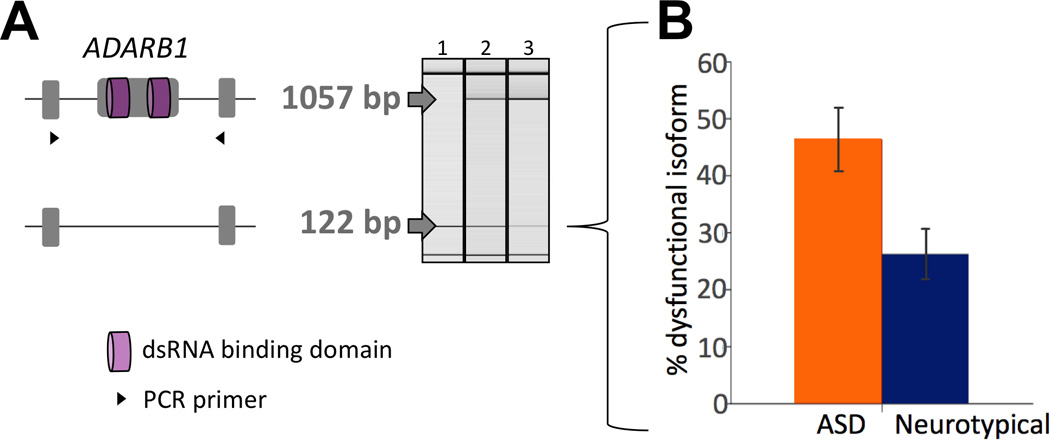Figure 4.

Differences in the relative usage of ADARB1 inactive form between individuals with ASD and neurotypical individuals (p=3.0e-3, Mann-Whitney U test). This isoform lacks the enzyme’s dsRBDs and has been shown to be untranslated68. ADARB1 is the predominant editing enzyme of the sites analyzed in this study. (A) Semiquantitative RT-PCR was used to measure the relative frequencies of functional (1057 bp product) and dysfunctional (NR_027672, 122 bp product) ADARB1 isoforms, using primers (black triangles) which detect both. (B) The mean relative frequency of the dysfunctional ADARB1 isoform was 46.3% ± 5.6% in ASD and 26% ± 4.5% in neurotypical individuals, similar to that previously reported in neurotypical human cerebellum68. All 25 samples included in the RNA editing survey were also part of this analysis. The relative frequency of the dysfunctional isoform is correlated with overall editing levels (Pearson’s p=3.2e-2). Additionally, the abundance of the dysfunctional form as quantitated by TaqMan® Gene Expression Assays was higher in individuals with ASD (p=7.3e-3, Mann-Whitney U test, Supplementary Figure 12), with a significant correlation between quantitative and semi-quantitative PCR results (Pearson’s p= 2.0e-5).
